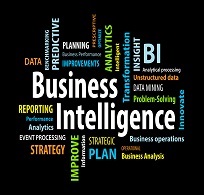 Many organizations have sung the praises of business intelligence for years, but many of those firms were not actually realizing the full benefits of it. That picture is beginning to change, as advanced analytics tools and techniques mature.
Many organizations have sung the praises of business intelligence for years, but many of those firms were not actually realizing the full benefits of it. That picture is beginning to change, as advanced analytics tools and techniques mature.
The result is that 2016 will definitely be the ‘year of action’ that many research firms have predicted when it comes to data analytics. That, at least, is the view of Shawn Rogers, chief research officer at Dell Statistica, who believes “we are at a tipping point with advanced analytics.”
If Rogers sounds familiar, it may be due to his early connection to Information Management. Rogers was, in fact, the founder of Information Management when it was originally called DM Review Magazine. He is now in his second year as chief research officer for Dell Statistica. “Prior to that I was an industry analyst. I worked for Enterprise Management Associates and I covered the business intelligence, data warehousing and big data space.”
Rogers believes there are a number of key trends driving business intelligence today that are making it more useful for a greater number of organizations.
“The maturity in the market has helped everyone evolve to a much more agile and flexible approach to advanced analytics. I think there are four things that are driving that which make it exciting,” Rogers says.
“One of them is the new sophistication of users,” Rogers notes “Users have become very comfortable with business intelligence. They want advanced insights into their business so they’re starting to look at advanced analytics as that next level of sophistication.”
“They’re certainly not afraid of it. They want it to be more consumable. They want it to be easier to get to. And they want it to move as fast as they are. The users are certainly making a change in the market,” Rogers says.
The market is also benefitting from new technologies that are enhancing the capabilities of advanced analytics.
“It now functions in a way that the enterprise functions,” Rogers explains. “Now the technology allows advanced analytics on all of the data within your environment to work pretty much at the speed of the business.”
Certainly not insignificant is the economic advantage of more competition from data analytics tool vendors.
“There are all kinds of solutions out there that are less money. It has opened the door for a much wider group of companies to leverage the data in their enterprise and to leverage advanced analytics,” Rogers observes.
“Lastly, the data is creating some fun pressure and opportunities. You have all these new data sources like social and things of that nature. But even more importantly we’re able to incorporate all of our data into our analysis,” Rogers says.
“I know that when I was in the press and as an analyst I use to write a lot about the 80/20 rule of data in the enterprise – the 20 percent we could use and the 80 percent that was too difficult. Now with all these new technologies and their cost benefits we’re not ignoring this data. So we’re able to bring in what use to look like expensive and difficult to manage information, and we’re merging it with more traditional analytics.”
“If you look at more sophisticated users, and economic advantage, and better technology, and new data, everything is changing,” Rogers says. “I think those four pieces are what are enabling advanced analytics to find a more critical home in the enterprise.”
Finally, the other key trend driving the need for speed when it comes to analytics and business intelligence return on investment is where those investments are coming from. Increasingly they are not from IT, Rogers stresses.
“I think there has been a big shift and most of the budgets now seem to be coming from the line of business – sales, marketing, finance, customer service. These are places where we’re seeing budgets fly with data-driven innovation,” Rogers says.
“When you shift away from the technology side of innovation and move toward the business side, there is always that instant demand for action. I think that saturation of big data solutions, the saturation of analytics tools, and a shift from IT to the business stakeholder standpoint is creating the demand for action over just collecting data,” Rogers concludes.
Source: Information Management




